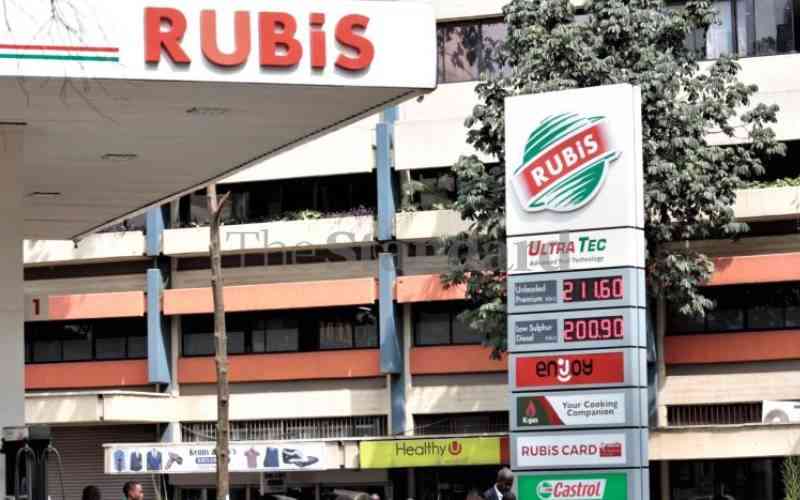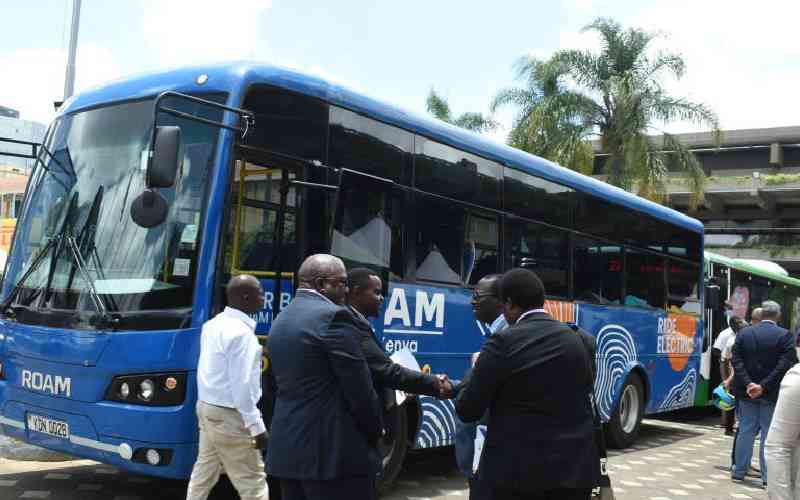By John Oyuke
A new era of lower electricity tariffs is set to open in Kenya as Government steps up efforts to minimise the cost of power.
Electricity Regulatory Commission (ERC) is in the process of licensing Kenya Electricity Transmission Company (Ketraco), a State corporation to use its transmission lines to enable industrial consumers buy cheaper power from the open market.
This is part of the Government’s plan to transform power transmission into open access system. This will allow large electricity customers purchase power from generators to help meet urgent power needs.
Ketraco has applied to ERC for a licence to transmit and supply electrical energy in bulk throughout the country in a move it believes would help lower power bills.
The parastatal was hived off from the then Kenya Power and Lighting Company three years ago and was aimed to reduce cost of electricity and provide a link with neighbouring countries.
“We have applied for the licence to transmit and supply bulky electrical energy,” Raphael Mworia, the firm’s head of corporate communications said.
“We have further requested stakeholders who may have any input on the matter to make submissions to ERC.”
Establishment of Ketraco resulted from the fact that much of the electricity leaked while in transmission.
Ownership structure
Yet Kenya Power lacked adequate funds to invest in the expansion and reinforcement of the transmission infrastructure.
Mworia says the move is aimed at boosting efficiencies. Under the arrangement, Kenya Power will focus on distribution and interface with consumers while Ketraco will focus on extending the national grid to new areas.
As a listed company, Kenya Power was practically a private company with part Government shareholding.
This ownership structure limited Government from investing in the upgrade of the infrastructure of the utility firm.
On set up in 2008, Ketraco was tasked to design, construct and operate new high voltage (132kV and above) electricity transmission infrastructure that forms the backbone of the National Transmission Grid with funding from the Exchequer and development partners to shield electricity consumers from high tariffs.
Stay informed. Subscribe to our newsletter
The parastatal has since completed Chemosit-Kisii, Rabai-Galu, Kindaruma-Meru Transmission lines and working on the Mombasa-Nairobi, Rabai-Malindi-Garsen-Lamu, Kilimambogo-Thika-Githambo and Mumias-Rangala lines.
“In the areas that we have completed projects, power reliability and quality has improved,” Mworia told Business Weekly.
High energy costs and erratic power supply in Kenya, constitutes the biggest threat to business and investment in the country.
According to Kenya Association of Manufacturers (Kam) Chief Executive Betty Maina, high energy costs and erratic power supply continues to put Kenya’s manufacturing sector more in a quandary.
“Often, industries go for up to six hours a week or more without power,” Ms Maina says. “This is unfortunate for a country whose long term economic blueprint (Vision 2030) hinges on growth of the manufacturing sector.”
Electricity demand in Kenya has been growing steadily over the years and currently, the cumulative shortfall has reached approximately 200MW.
As a result of the high energy costs, consumers are forced to pay more for goods as manufacturers cushion themselves from high production costs by increasing commodity prices.
However, Ketraco believes once fully licensed, it would help improve quality and reliability of electricity supply and provide electricity to areas currently not on the national grid.
Ketraco customers would include Kenya Power, Kenya Electricity Generating Company (KenGen), and Independent Power Producers (IPPs) as well as regional utilities in Uganda and Ethiopia.
System losses
Ketraco’s charges to her customers will be determined by the Annual Revenue Requirement. Mworia says this factor would lead to lower tariffs because projects are financed by low interest public finance as opposed to high interest private loans before Ketraco was set up three years ago.
Under the arrangement, Ketraco would act a transporter, using its high voltage transmission infrastructure to evacuate power from far-flung generators on behalf of the customers to the nearest distribution point or national grid.
This is expected to help increase access to electricity, customer connectivity, improve quality of supply and reduce transmission losses that currently cost the country about $17 million (Sh1.4 b) per year.
According to a World Bank report published in 2010, electric power transmission and distribution losses (kWh) in Kenya stood at 1068 in 2009 up from 1057 (KWh) reported in the previous year (2008).
System losses occur at three stages of operation: during transmission from the power generating stations to transmission substations; in the course of distribution from the transmission substations to the customers; and at some customers’ premises through tampering of metering systems.
Transmission and distribution of electricity over long distances and overloading of lines result in higher system losses.
Reduction of losses therefore requires investment in the construction of additional substations and transmission lines to reduce the length and loading of the lines, or replacing conductors with larger ones.
According to Mworia, Ketraco also expects to help reduce cost of electricity to consumers by absorbing capital cost of transmission lines since the State corporation is fully funded by the Government.
 The Standard Group Plc is a
multi-media organization with investments in media platforms spanning newspaper
print operations, television, radio broadcasting, digital and online services. The
Standard Group is recognized as a leading multi-media house in Kenya with a key
influence in matters of national and international interest.
The Standard Group Plc is a
multi-media organization with investments in media platforms spanning newspaper
print operations, television, radio broadcasting, digital and online services. The
Standard Group is recognized as a leading multi-media house in Kenya with a key
influence in matters of national and international interest.
 The Standard Group Plc is a
multi-media organization with investments in media platforms spanning newspaper
print operations, television, radio broadcasting, digital and online services. The
Standard Group is recognized as a leading multi-media house in Kenya with a key
influence in matters of national and international interest.
The Standard Group Plc is a
multi-media organization with investments in media platforms spanning newspaper
print operations, television, radio broadcasting, digital and online services. The
Standard Group is recognized as a leading multi-media house in Kenya with a key
influence in matters of national and international interest.








